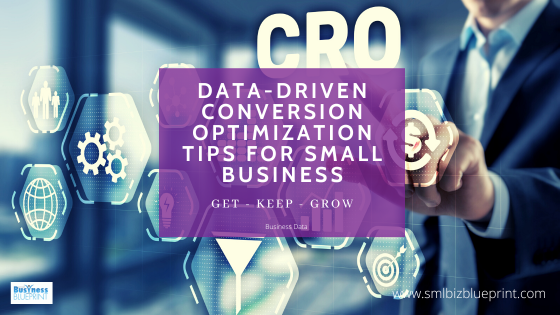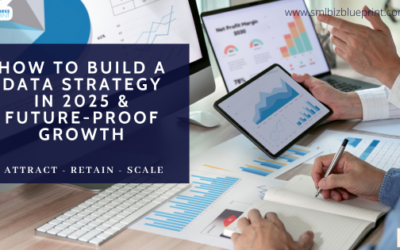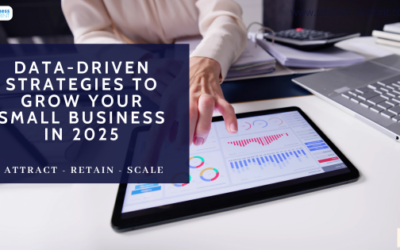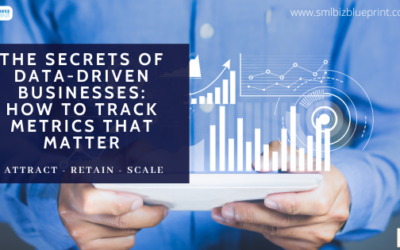In today’s digital world, understanding and optimising your conversion rates is paramount for success.
This comprehensive guide will explore how data can be your secret weapon in decoding conversion rates and driving your business forward.
Are you ready to unlock the full potential of your business? Let’s dive in.

1 Understanding Conversion Rates
Before we delve into the data, it’s crucial to grasp the concept of conversion rates.
Conversion rates represent the percentage of visitors who take a desired action, such as purchasing, signing up for a newsletter, or clicking on an ad. Understanding this fundamental metric is the first step toward improving it.
Consider your website a storefront; conversion rates are your sales performance indicators. As a brick-and-mortar store owner who tracks foot traffic and sales, you must monitor online interactions to optimise your digital presence.
Actions
Define Clear Conversion Goals:
Start by setting specific conversion goals that align with your business objectives. Whether increasing online sales by 10% or growing your email subscriber list by 20%, having clear targets will guide your efforts.
Audit Your Current Conversion Funnel:
Analyse your current website or sales funnel to identify where visitors drop off or fail to convert. Tools like Google Analytics can provide valuable insights into user behaviour.
Segment Your Audience:
Not all visitors are the same. Segment your audience based on demographics, behaviour, or interests. This segmentation allows you to tailor your marketing messages and offers to different groups, improving conversion rates.
2 The Power of Data Analysis
In the age of information, data is your most valuable asset. Collecting and analysing data provides actionable insights into your customers’ behaviour, preferences, and pain points.
For instance, you can track user journeys on your website, identify the pages where visitors drop off, and understand what prompts them to convert.
Actions
Implement Analytics Tools:
Set up web analytics tools like Google Analytics, Mixpanel, or Hotjar to collect data on user interactions with your website. These tools provide valuable data on user behaviour, traffic sources, and more.
Track Key Metrics:
Identify the key performance indicators (KPIs) that directly impact your conversion rates. Focus on metrics like bounce rate, click-through rate, and conversion rate. Regularly monitor these metrics to measure your progress.
Create Custom Reports:
Customise your analytics reports to focus on the data that matters most to your business. For example, create a report that tracks the conversion rates for specific products or landing pages. This allows you to pinpoint areas that need improvement.
3 Setting Clear Goals
To navigate the sea of data effectively, set clear conversion goals. Whether boosting online sales, increasing sign-ups, or getting more inquiries, specific objectives give you a roadmap to success.
Remember, data is only as valuable as the goals it helps you achieve.
Actions
SMART Goals:
Apply the SMART (Specific, Measurable, Achievable, Relevant, Time-bound) framework to your conversion goals. This ensures that your objectives are well-defined and achievable within a set timeframe.
Prioritise Goals:
Not all conversion goals are equally important. Prioritise them based on their potential impact on your business. Focus on high-impact goals first and allocate resources accordingly.
Regular Review:
Periodically review and adjust your goals as your business evolves. Stay flexible and adapt to changing market conditions or shifts in customer behaviour. Your goals should remain aligned with your overall business strategy.
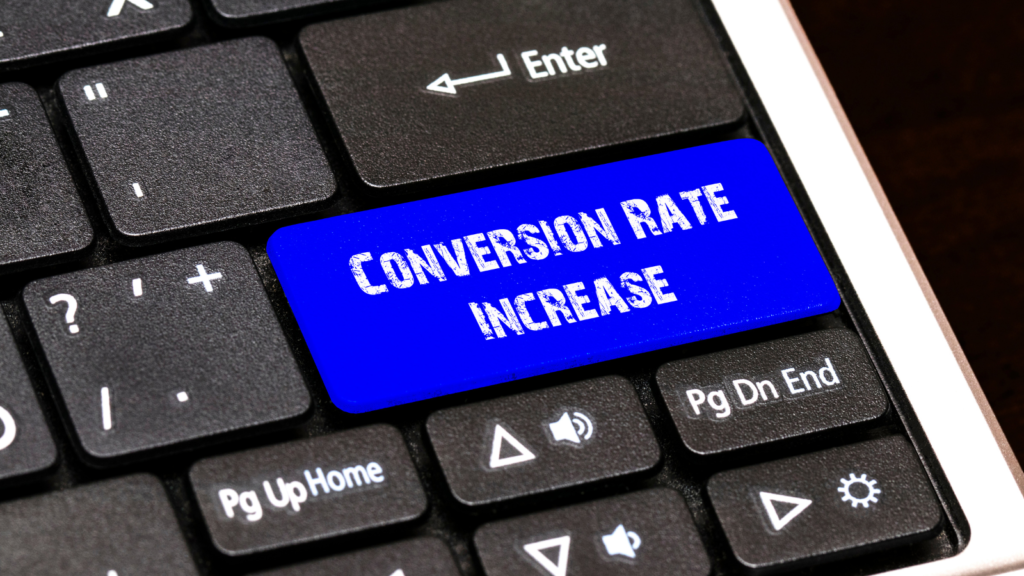
4 A/B Testing and Optimization
Now, let’s talk about a game-changing technique: A/B testing. Imagine you’re a chef experimenting with two different recipes for the same dish.
A/B testing lets you compare two variations of a webpage, email campaign, or ad to determine which performs better. You can refine your strategies by analysing the results and optimising for better conversions.
Actions
Identify Testing Opportunities:
Use data to pinpoint areas of your website or marketing campaigns where improvements can be made. Look for elements like headlines, call-to-action buttons, or product descriptions that can be tested.
Start Small:
Begin with simple A/B tests to understand the basics. Test one element at a time, such as the colour of a button or the wording of a headline. Gradually work your way up to more complex tests.
Analyse Results Thoroughly:
After running A/B tests, analyse the results rigorously. Look for statistically significant differences in conversion rates between the variations. Use this data to inform future optimisation efforts.
5 Identifying Bottlenecks and Barriers
Conversion optimisation also involves clearing the path to purchase. Picture a river flowing smoothly until it encounters rocks and debris. Similarly, your customer’s journey should be seamless.
Use data to identify bottlenecks like complicated checkout processes or slow-loading pages and remove them to improve conversions.
Actions
User Testing:
Conduct user testing or gather feedback from real users to identify usability issues on your website. Watch how users navigate your site and pay attention to any confusion or frustration they experience.
Heatmaps and Session Recordings:
Use heat mapping and session recording tools to visualise how users interact with your site. These tools can reveal where users click, move their mouse, or spend the most time, helping you spot bottlenecks.
Optimise Loading Speed:
Page load time is a critical factor in conversion rates. Use tools like Google PageSpeed Insights to identify and address slow-loading pages, optimise images, and reduce server response times.
6 Personalization and Targeting
Customers appreciate a tailored experience. Personalisation isn’t just addressing them by name; it’s about offering relevant content, products, and recommendations based on their preferences.
Data-driven insights enable you to create personalised marketing campaigns that resonate with your audience.
Actions
Collect User Data:
Start by gathering data on your customers’ preferences, behaviours, and past interactions with your brand. This data can include purchase history, browsing habits, and demographic information.
Segment Your Audience:
Divide your customer base into meaningful segments based on your collected data. For example, segment by location, purchase history, or product interests. This segmentation allows you to create personalised marketing campaigns for each group.
Personalised Content:
Tailor your marketing messages, product recommendations, and content to each segment. Use dynamic content on your website and emails to display personalised offers, product suggestions, and relevant content based on user preferences.
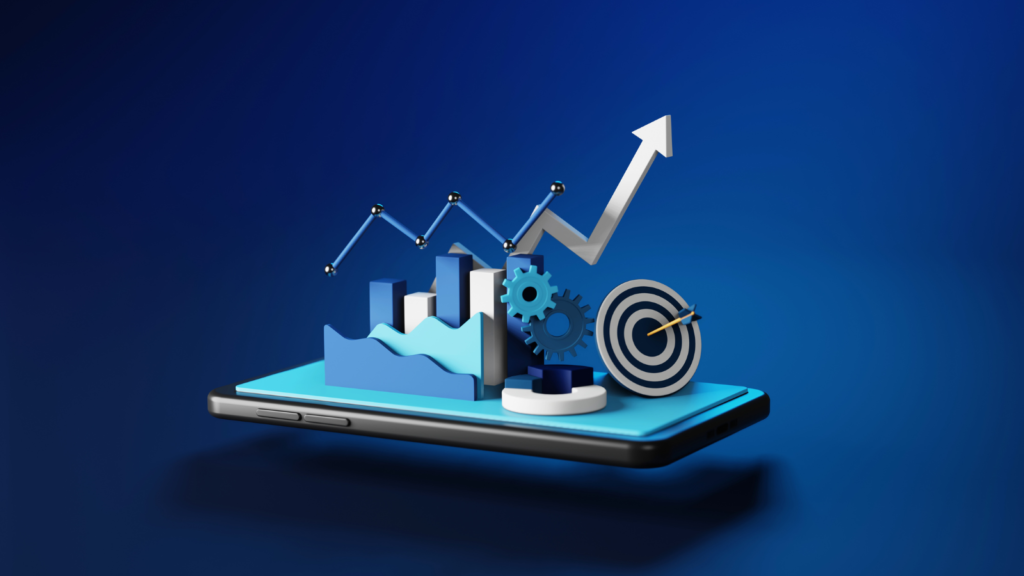
7 Monitoring and Continuous Improvement
Conversion rates aren’t static; they evolve. Regularly monitor your metrics and compare them over time to gauge your progress. Benchmark your performance against industry standards to stay competitive.
Remember, data-driven decision-making is an ongoing process.
Actions
Regular Data Reviews:
Set up a schedule for reviewing your conversion rate data. Weekly or monthly reviews can help you spot trends and react quickly to changes in performance.
Benchmark Against Competitors:
Compare your conversion rates with industry benchmarks to understand where you stand in your sector. This can help you identify areas for improvement and stay competitive.
Iterative Testing:
Don’t stop at A/B testing. Continually test and optimise different elements of your website and marketing strategies. Experiment with new approaches, gather data and refine your tactics based on what works best.
Initial Steps
Set Clear Conversion Goals:
Begin by defining specific and measurable conversion goals that align with your business objectives. These goals serve as guiding stars for your optimisation efforts and provide a clear direction for your actions.
Implement A/B Testing:
Start conducting A/B tests on different elements of your website or marketing campaigns. Begin with simple tests, such as changing the colour of a call-to-action button or tweaking headline wording. Analyse the results and use them to make data-driven improvements to your strategies.
Collect and Analyze Data:
Set up web analytics tools like Google Analytics to collect data on user behaviour and website performance. Regularly review key metrics like bounce rate, click-through rate, and conversion rate to gain insights into user interactions. Use this data to inform your decision-making and identify areas for optimisation.
Additional Options
Emotion-Driven Copywriting:
Incorporating emotionally resonant language and storytelling into your content can be highly effective. It’s not just about listing product features; it’s about creating a connection with your audience. Share stories of satisfied customers or use storytelling to explain how your product or service solves a problem. This can evoke emotions that drive conversions.
Exit-Intent Pop-Ups:
While pop-ups are often seen as intrusive, exit-intent pop-ups are a clever way to engage visitors who are about to leave your website. These pop-ups are triggered when a user’s mouse cursor indicates they are leaving the page. You can use them to offer a last-minute discount, a free resource, or a subscription to your newsletter, giving visitors a reason to stay or convert.
Social Proof Widgets:
Implementing social proof widgets, such as live visitor counts, recent purchase notifications, or customer reviews and ratings, can create a sense of trust and urgency. When potential customers see others actively engaging or making purchases, they are more likely to follow suit.
Conclusion
Mastering conversion rates through data is the key to business success in the digital age. Understand the fundamentals, harness the power of data analysis, set clear goals, and embrace techniques like A/B testing and personalisation. Identify and remove bottlenecks, and continually monitor and improve your strategies.
Are you ready to take your business to the next level? Start decoding conversion rates with data today.
Your journey to higher conversions and sustainable growth begins now.
FAQs
Q1: What are conversion rates, and why are they important for my business?
A1: Conversion rates represent the percentage of visitors who take a desired action on your website, such as purchasing, signing up for a newsletter, or clicking on an ad. They are vital for your business because they provide insights into how effectively your digital efforts translate into tangible results. By improving conversion rates, you can maximise the value of your website traffic and marketing efforts, leading to increased revenue and business growth.
Q2: How can I collect and analyse data to improve my conversion rates?
A2: To collect and analyse data effectively, implement tracking tools like Google Analytics on your website. This will help you gather valuable information about user behaviour. Next, identify key performance indicators (KPIs) related to your conversion goals, such as bounce, click-through, and conversion rates. Regularly review these metrics, create reports, and use data visualisation tools to gain insights. Finally, use A/B testing to experiment with different strategies and continually refine your approach based on your collected data.
Q3: What is A/B testing, and how can it benefit my business?
A3: A/B testing, also known as split testing, is a method where you compare two versions of a webpage, email, or ad to determine which one performs better in achieving your conversion goals. It allows you to make data-driven decisions by understanding what elements of your content or design are more effective at converting visitors. A/B testing can lead to improved conversion rates, increased user engagement, and, ultimately, higher ROI on your marketing efforts.
Q4: Why is personalisation crucial for conversion rate optimisation?
A4: Personalization is crucial because it creates a more tailored and engaging experience for your audience. You increase the likelihood of conversion by using data-driven insights to deliver content, product recommendations, or marketing messages that align with individual preferences and behaviours. Personalisation builds trust, improves user satisfaction, and enhances the overall customer experience, ultimately driving higher conversion rates and customer loyalty.
Q5: What common bottlenecks hinder conversion rates, and how can I address them?
A5: Common bottlenecks that can hinder conversion rates include slow website loading times, complex checkout processes, confusing navigation, and unclear call-to-action buttons. To address these issues, regularly analyse user behaviour data to identify where visitors drop off or encounter difficulties. Make necessary improvements to streamline the user journey, optimise website performance, simplify forms, and ensure your calls to action are clear and compelling. Testing and refining these elements will help you remove bottlenecks and improve conversion rates.

